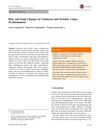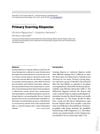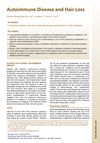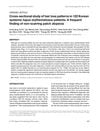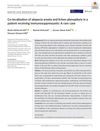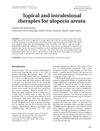Chinese SLE Treatment and Research Group Registry XIII: Prevalence and Risk Factors for Chronic Scarring Alopecia in Patients with Systemic Lupus Erythematosus
January 2021
in “
Arthritis Research & Therapy
”
chronic scarring alopecia systemic lupus erythematosus SLE mucocutaneous lesions Systemic Lupus International Collaborating Clinics/American College of Rheumatology Damage Index SLICC/ACR-DI anti-Smith antibodies anti-Sm antibodies renal involvement cardio-respiratory involvement immunosuppressants scarring alopecia lupus skin lesions kidney involvement heart and lung involvement immunosuppressive drugs
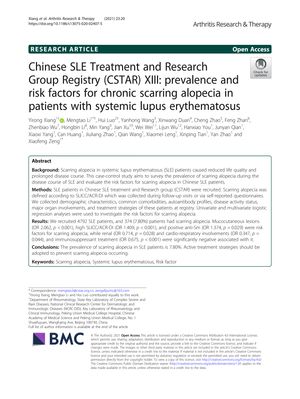
TLDR About 8% of people with systemic lupus erythematosus have chronic scarring alopecia, with certain symptoms and positive antibodies increasing the risk, while immunosuppressants may lower it.
In a study involving 4792 patients with systemic lupus erythematosus (SLE) from the Chinese SLE Treatment and Research Group (CSTAR) registry, the prevalence of chronic scarring alopecia was determined to be 7.80%. The research, conducted by Xiang et al., identified mucocutaneous lesions, a high Systemic Lupus International Collaborating Clinics/American College of Rheumatology Damage Index (SLICC/ACR-DI), and positive anti-Smith (anti-Sm) antibodies as risk factors for the development of scarring alopecia. In contrast, the presence of renal and cardio-respiratory involvements and the use of immunosuppressants were found to be negatively associated with the occurrence of scarring alopecia. The study concluded that proactive treatment strategies are crucial in preventing the development of scarring alopecia in patients with SLE.

